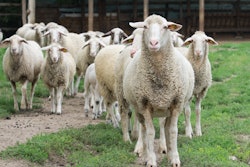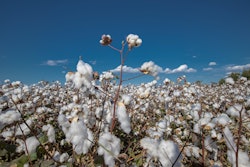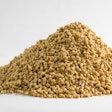
Climate change is no longer a distant threat, but an urgent global crisis that affects every aspect of our lives, including the availability of essential resources like feed grains.
Feed grains, such as corn, wheat and barley, are the backbone of the world’s livestock and poultry industries. They serve as a primary source of nutrition for billions of animals worldwide, ultimately influencing the global food supply chain. However, the impact of climate change on feed grain production is becoming increasingly concerning, posing risks to food security and the environment.
The challenge of climate change
Climate change is causing a wide range of disruptions to agricultural systems across the globe. Rising temperatures, altered precipitation patterns, more frequent and severe weather events, and changing pest and disease dynamics are all consequences of a warming planet. These changes are creating a hostile environment for feed grain production and raising concerns about their long-term availability.
1. Water scarcity. One of the most significant challenges to feed grain production is water scarcity. Many regions that rely heavily on feed grain cultivation are experiencing reduced water availability due to prolonged droughts and shifting rainfall patterns. In the United States, the Midwest’s corn and soybean production – which largely contributes to animal feed – has faced increased risk due to frequent droughts. In this way, drought-resistant crops such as sorghum are becoming more important.
2. Heat stress. Rising temperatures can lead to heat stress in crops, reducing yields and compromising grain quality, for example by increasing the risk of mycotoxin contamination. Corn, a crucial feed grain, is particularly vulnerable to high temperatures during the critical pollination stage. Also, elevated temperatures can reduce kernel formation and result in lower yields.
3. Extreme weather events. Climate change is associated with an increase in extreme weather events, such as hurricanes and floods creating the right conditions for crop failures. These events can cause extensive damage to feed grain crops, disrupting the supply chain and leading to price spikes.
4. Pest and disease outbreaks. Warmer temperatures can facilitate the spread of pests and diseases that affect feed grains. These outbreaks can decimate crop yields, requiring increased pesticide use and driving up production costs.
Impact on food security
The global availability of feed grains directly affects human food security, as they are essential for raising livestock and poultry, which are major sources of protein for billions of people. When feed grain prices rise or supplies become scarce, this has a ripple effect throughout the entire food chain. The increased cost of animal feed can lead to higher meat, dairy and egg prices, making them less affordable for many consumers.
Furthermore, a reduction in the availability of feed grains could lead to a decrease in meat production, impacting the livelihoods of millions of farmers and ranchers who depend on livestock for their income.
This, in turn, can affect the overall stability of rural communities and exacerbate food insecurity in vulnerable populations.
Conclusion
Climate change poses a significant threat to the global availability of feed grains, which are vital for food security and the livestock industry. To address this challenge, a comprehensive and coordinated effort is needed, involving governments, farmers, researchers and the private sector. By investing in climate-resilient crop varieties, sustainable farming practices and water management, we can ensure that feed grains remain accessible, affordable and environmentally sustainable in a changing world. The time to act is now to safeguard our food supply and protect vulnerable communities from the impacts of climate change.
















